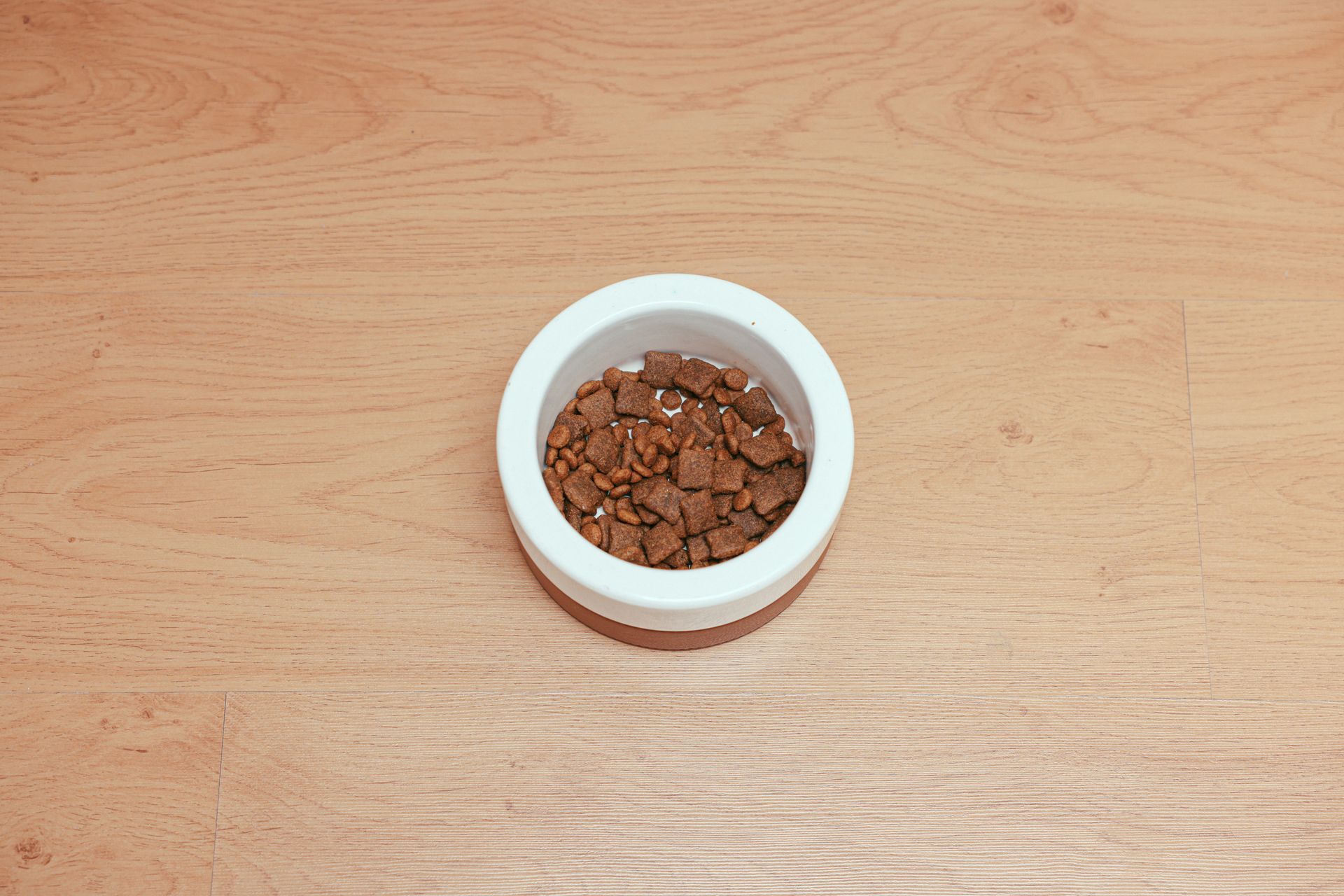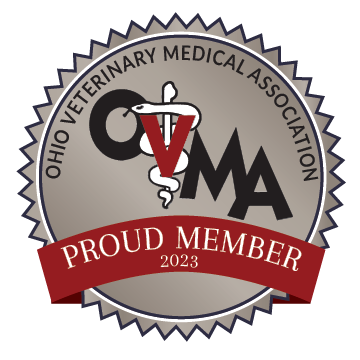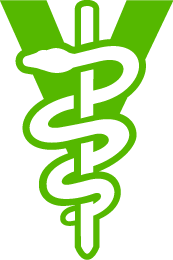Biochemical Profile (Bloodwork)
There are many reasons that a biochemical profile may be recommended for your farm animal or pet. These include:
- Diagnostics for a sick patient
- Monitoring for chronic medications
- Prior to Anesthesia
- Establiching a Baseline
- Senior Wellness programs
A biochemical profile supplies us with a "snapshot" of what is going on within your animal's body.
So what is it, exactly?
A biochemical profile is the evaluation of your pet's overall well being. We often combine this test with the Complete Blood Cell Count (CBC). These two tests are the two most basic, but important, tests that we perform on a day to day basis. There are 15 values that are evaluated in the Profile testing.
A basic breakdown is as follows:
Glucose : This is an evaluation of blood sugar, the end product of carbohydrate metabolism and is the primary source of energy for the body. Elevated glucose levels typically indicate Diabetes, but may also indicate stress, Cushing’s disease, pancreatitis, or can be due to certain medications. Low glucose levels may indicate liver disease, insulin overdose, severe bacterial infection, hypothyroidism and Addison’s disease. Low levels can also be due to poor nutrition levels, especially in young animals.
ALT: ALT is most often associated with the liver. High levels indicate liver damage, toxin ingestion, Cushing’s disease and various metabolic disorders. Low levels indicate starvation or malnutrition.
Alkaline Phosphatase (ALKP): ALKP is important in overall metabolism. It is found in liver cells. High levels indicate bile duct obstruction, Cushing’s disease, liver disease, the presence of various drugs(E.G. steroids or phenobarbital). Low levels can indicate starvation or malnutrition.
Total Bilirubin: Bilirubin is a bile pigment and the end product of red blood cell breakdown. High levels of bilirubin are responsible for the yellow. jaundiced look that often accompanies liver disease. High levels can be due to bile duct or gall bladder obstruction, liver disease and rapid breakdown of red blood cells. Low levels are not considered clinically relevant.
Cholesterol: Cholesterol is important in the synthesis of certain hormones. High levels are not as important as in people. Low levels indicate liver disease, starvation, kidney disease, Cushing’s, pancreatitis, diabetes and hypothyroidism.
Total Protein: Total Protein (TP) is an important substance in all parts of the body. High levels can indicate dehydration, inflammation, chronic infection and certain cancers. Low levels may indicate intestinal absorption problems, liver disease, Addison’s disease, severe burns and losses through the kidneys.
Albumin: Albumin is the major protein found in the body. It carries various substances through the blood and is important in maintaining pressure within the vessels. High levels indicate dehydration. Low levels indicate chronic inflammation, liver disease, kidney disease, starvation and blood loss.
Globulin:Globulin is the second of the major blood proteins in the body. It is important for many vital functions. Increases may indicate dehydration, chronic inflammation, chronic infection, an possible cancers. Low levels may be due to poor nutrition, improper absorption (due to intestinal inflammation), or possible kidney disease.
BUN (Blood Urea Nitrogen): BUN is the major end product of protein metabolism. High levels may indicate kidney disease, dehydration, shock, high protein diet, certain toxin ingestions, poor circulation to the kidneys orurinary obstruction. Low levels indicate liver disease or starvation (low overall protein in the diet).
Creatinine: Creatinine is the end product of phosphocreatine metabolism, which is important in muscle contractions. High levels often indicate kidney disease, dehydration, shock, certain toxin ingestions, poor circulation to the kidneys and urinary obstruction. Low levels indicate liver disease or starvation.
Phophorus: Phosphorus is often associated with calcium. It is important in all aspects of metabolism. High levels can indicate kidney disease, dietary imbalance, excess ingestion of vitamin D and severe tissue trauma. Low levels may be due to dietary imbalance, some cancers, overdose of insulin, diabetes mellitus, eclampsia or an overactive parathyroid gland.
Calcium: Calcium is a mineral found throughout the body. It is the basis for bones, teeth and muscle contractions. High levels indicate certain forms of cancer, Addison’s disease, excess intake of vitamin D and an overactive parathyroid gland. Low levels indicate eclampsia, severe pancreatitis, dietary imbalance, intestinal absorption disorders, low intact of vitamin D, Cushing’s disease and certain toxin ingestions.
Sodium: Sodium works in combination with potassium to maintain the normal function of muscle and nerves. It is truly important to all cells within the body. High levels indicate dehydration, lack of water, diabetes insipidus, Cushing’s and excess salt intake. Low levels indicate starvation, severe diarrhea, vomiting, Addison’s disease, hypothyroidism and metabolic acidosis.
Potassium: As mentioned above, Potassium works in conjunction with Sodium for healthy nerves and muscles. High levels could indicate diabetes mellitus, toxin ingestion, urinary obstruction, acute kidney failure, severe muscle damage and Addison’s disease. Low levels may indicate vomiting and diarrhea, gastrointestinal cancer, insulin overdose, Cushing’s disease, overuse of diuretics and starvation. In addition, potassium supplementation must be performed slowly when giving intravenouse fluids. Too rapid of administration can result in stoppage of the heart.
Chloride: Chloride is important in maintaining the acid balance in the blood as well as combining with hydrogen to form hydrochloric acid for stomach digestion. High levels indicate dehydration, metabolic acidosis, Addison’s disease and kidney disease. Low levels indicate vomiting and metabolic alkalosis
Sometimes we order additional test that can be included in the profile. Often, the outside laboratory is able to test for more variables than an in house laboratory. These tests are:
AST is important in the breakdown and elimination of nitrogen. High levels indicate muscle damage, heart muscle damage, liver damage, toxin ingestion, inflammation and various metabolic disorders. Low levels indicate starvation or malnutrition.
GGT is also important in nitrogen metabolism and is found within liver cells. High levels indicate bile duct obstruction, liver disease, pancreatitis, Cushing’s and can be caused by high levels of steroids. Low levels indicate starvation and malnutrition.
Amylase is secreted by the pancreas and is important in normal digestion of starch. High levels indicate pancreatic inflammation or cancer, kidney disease, prostatic inflammation, diabetic ketoacidosis and liver cancer. Low levels can indicate malnutrition or starvation.
CK is very important in storing energy needed for muscle contractions. High levels indicate muscle trauma or damage such as due to seizures, surgery, bruises, inflammation, nutritional and degenerative diseases. Low levels are not clinically relevant.
CO2 indicates the current acid balance of the body and is the end product of metabolism. High levels indicate an acidic condition and can be due to kidney failure, vomiting, dehydration or overuse of diuretics. Low levels indicate a basic condition of the blood and can be due to starvation, kidney failure (can also cause acidosis), diarrhea and poor liver function.













